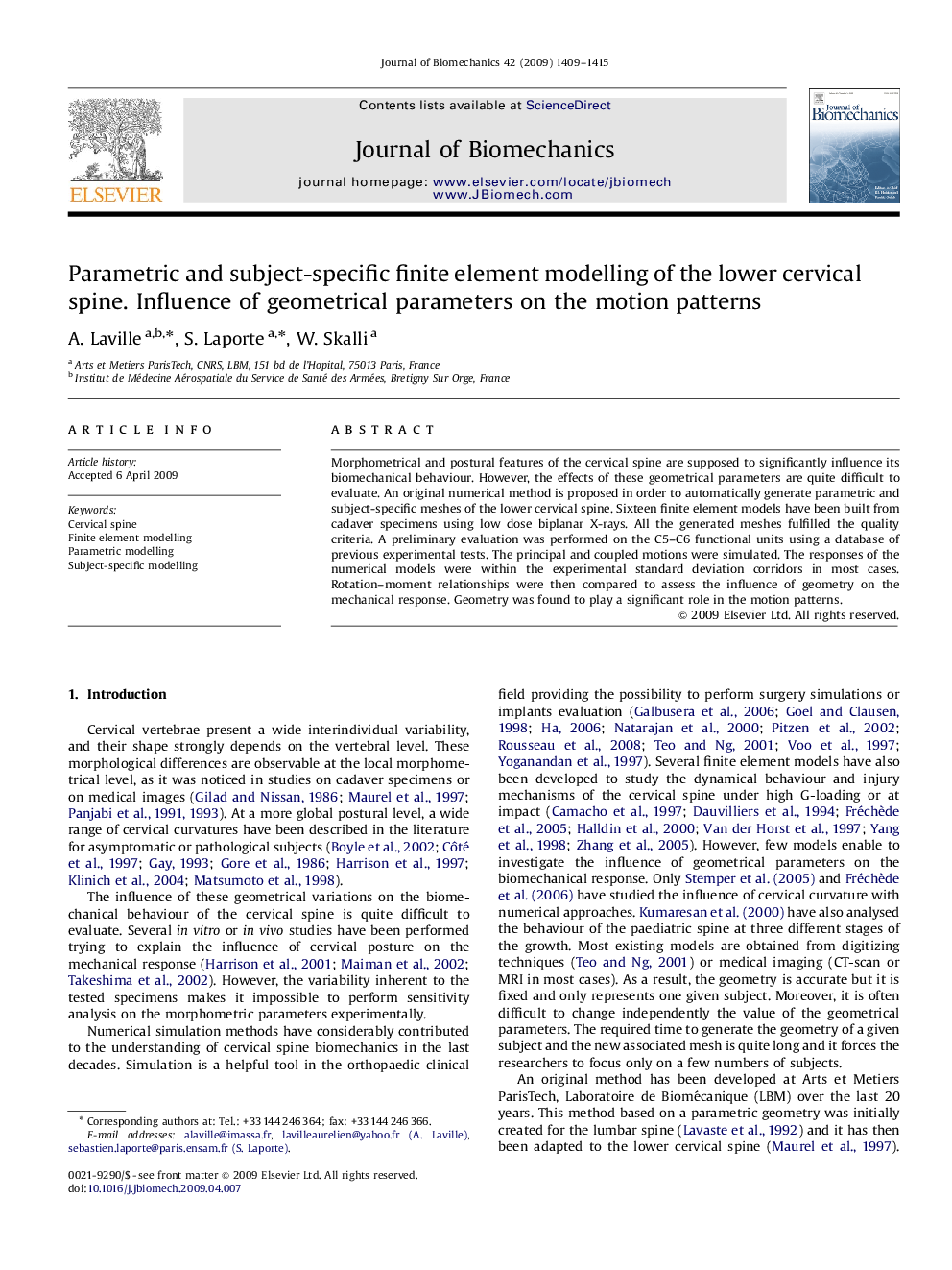| Article ID | Journal | Published Year | Pages | File Type |
|---|---|---|---|---|
| 872841 | Journal of Biomechanics | 2009 | 7 Pages |
Morphometrical and postural features of the cervical spine are supposed to significantly influence its biomechanical behaviour. However, the effects of these geometrical parameters are quite difficult to evaluate. An original numerical method is proposed in order to automatically generate parametric and subject-specific meshes of the lower cervical spine. Sixteen finite element models have been built from cadaver specimens using low dose biplanar X-rays. All the generated meshes fulfilled the quality criteria. A preliminary evaluation was performed on the C5–C6 functional units using a database of previous experimental tests. The principal and coupled motions were simulated. The responses of the numerical models were within the experimental standard deviation corridors in most cases. Rotation–moment relationships were then compared to assess the influence of geometry on the mechanical response. Geometry was found to play a significant role in the motion patterns.
